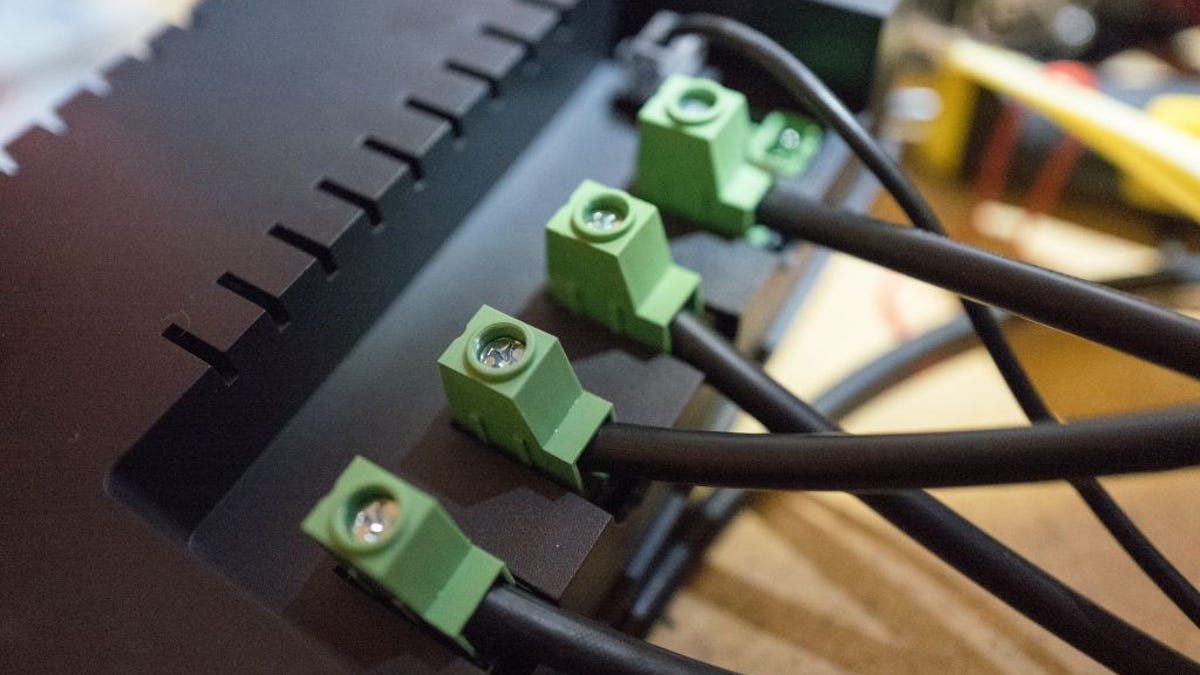Charge Controllers Help Solar Panels and Batteries Get Along
Why this small, overlooked piece of technology is key to setting up your solar and battery system for success.

A solar charge controller helps make sure your solar panels and battery are working together effectively.
Pairing solar panels with energy storage is becoming increasingly popular -- and for good reason.
Homeowners who install a battery alongside their rooftop solar array unlock the ability to store solar power when it's sunniest, and deploy it when electricity from the grid is most expensive. But underlying that system is a small piece of hardware most people probably don't think about: a solar charge controller. This single technology is what allows solar panels and batteries to work together, and it's important to understand its role before you invest in a home energy system.
So whether you're creating an off-grid DIY setup, or you're working with a solar installer to retrofit your roof, here's everything you need to know about the role and function of a solar charge controller -- and how to choose one.
Can solar panels save you money?
Interested in understanding the impact solar can have on your home? Enter some basic information below, and we’ll instantly provide a free estimate of your energy savings.
How do solar charge controllers work?
Essentially, your solar panels and your battery need help getting along.
"What a solar charge controller does, is it is a smart way to most efficiently capture power from a solar panel and store it in a battery," said Krystal Persaud, co-founder and CEO of Wildgrid, an educational site about home electrification. "People assume that happens automatically, but it doesn't."
To understand why, think about the solar panels on a roof: With every passing cloud or slight change in sunlight, the power produced by a single panel varies. "It's very erratic," Persaud said.
Batteries don't like erratic power; they want a steady power source. "Charging a battery 10 seconds at a time is not an efficient way to charge a battery," Persaud said. So a solar charge controller exists to funnel the power from all your solar panels into a relatively stable current that your battery can receive more easily.
Types of solar charge controllers
There are two main types of solar charge controllers on the market. Here's what you need to know about both:
MPPT controllers
The most common type of solar charge controller these days is the maximum power point tracking variety, according to Persaud. As solar panels produce their irregular flow of power, an MPPT controller uses an algorithm to find the maximum steady amount of power it can pull and send to a home battery, Persaud said.
PWM controllers
The older, less efficient type of solar charge controller is the pulse-width modulation variety. Persaud said this technology is not as "smart" as the MPPT controllers, and sends the battery a minimum amount of power (think of it as the lowest common denominator) as consistently as possible. "It's not as common anymore," Persaud said.
How much do solar charge controllers cost?
Solar charge controllers are usually not the type of thing you shop around for.
"It's really wrapped into the whole cost" of a solar installation, Persaud said. "I don't even think most installers would itemize that. It's just assumed that you're getting it."
That said, if you're taking a DIY approach and buying parts separately, solar charge controllers usually cost at least a couple hundred dollars, Persaud said. Higher-end models can cost as much as $700. (Note: When buying solar equipment piecemeal, you'll want to make sure all the different brands work together -- or better yet, buy from a single brand.)
Should I get a solar charge controller?
The decision here is pretty simple: If you're pairing a battery with your solar system, you need a solar charge controller, Persaud said. Again, a solar installer would include that hardware as a matter of course if you're also installing a battery.
If you're doing some kind of DIY assembly, like a camper van or other off-grid application that involves battery storage, you'd also want a charge controller, Persaud said. "It's really extra critical in situations like that," she explained, because you want your battery to capture the maximum amount of solar power, most efficiently.
But if you're just installing solar all by itself, you don't need a charge controller, Persaud said, because there simply isn't anything to charge.



